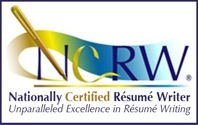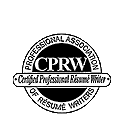5 Tips for Preventing Age Bias in Your Executive Resume & LinkedIn Profile
{Click here to read the original article on Careerrocketeer.}
Back in the job market for an executive role? You may have encountered (or wondered about) potential age discrimination when putting yourself “out there” for an executive job search.
If you find yourself experiencing rejection in your job applications, the possibility of age discrimination may seem all too real.
Yet, it’s possible that you’re actually CALLING attention to your age – more so that your leadership qualifications. Read more
5 Tips on How to Use LinkedIn Better
{Click here to read the original article on Real Simple.}
Whether you’re looking for a new job or just want to network, use these tips to make your profile more effective.
You’ve friended just about everyone you’ve ever met on Facebook (including your crush from the summer of ‘89). You’re a pro at curating deceptively easy dinner-party recipes on Pinterest. And on Twitter you have a couple of hundred followers reading your 140-character zingers. Yet all this time you’ve hesitated to join LinkedIn. Are you missing out? Here’s a guide to the career-networking website, along with ways to navigate it if you do sign up.<!–more–>
Who should use LinkedIn?
If you work in health care, finance, marketing, event planning, law, technology, consulting, human resources, or sales or at a nonprofit, “the site is a great place to connect with people who can help you professionally, and vice versa, whether you’re job-seeking or networking,” says Victoria Ipri, the CEO of Ipri International, a Philadelphia-based marketing firm that specializes in LinkedIn strategies. About 26 percent of companies research potential employees on the site, according to a 2013 CareerBuilder study. Feel free to skip membership, however, if you’re contentedly self-employed with a trade like personal organizing or gardening; you’ll be able to market yourself to clients more easily on Facebook.
Should you connect with your best friend?
What about a stranger? Your college roommate is a nurse, and you’re an accountant. So you can’t really assist each other professionally, right? Not necessarily. “You’re not just connecting with a person, but their network as well. She may have a link to someone who could help you,” says Viveka von Rosen, the author of LinkedIn Marketing ($30, amazon.com). For the same reason, it’s also wise to consider accepting a request from someone you don’t know. “When you receive a random invitation, look at the sender’s profile and determine if it is a quality connection for your needs and circumstances before accepting or rejecting it,” says Ipri.
What’s the best way to grow your network?
Use the site’s “People You May Know” tool (located on the right side of your page) to reach out to professionals with similar backgrounds and connections. If you’re interested in working for a particular company (IBM or Procter & Gamble, say), go to its page and click to “follow” it, then look at the list of people who work there. Next, find an employee whose path you would like to emulate, then invite her to connect, says Nicole Williams, the resident career expert at LinkedIn: “To demonstrate that you would be a meaningful connection, write a note that conveys that you have done research on her employer and her personal accomplishments.”
How frequently do you need to check in?
Every day for a few minutes, and once a week for about a half hour. That’s how much time you’ll need to write to a new connection and to participate in a group discussion. Keep in mind: “Hiring managers are 10 times more likely to look at your profile if you post something at least weekly,” says Williams.
Should your profile page replicate your résumé?
It should be even more detailed. Think of it as your résumé, plus everything else that you couldn’t fit on it, like video clips of speeches that you’ve given and news articles about your work, says von Rosen. The more thorough you are in describing yourself, the easier it is for an employer to assess your qualifications. So go on—toot your own horn.
Staying Viable After a “No”
{Click here to read the original article on Careerrocketeer.}
A while ago I wrote a piece titled…
The point of the article was that it’s not unusual for a company to be interested in hiring a particular candidate even after they rejected them for a position they were initially pursuing. The article gave a number of reasons to be sure to let the employer know you would still be interested in pursuing other opportunities at the organization as something appropriate arises. Read more
10 Things to Do After the Job Interview
{Click here to read the original article on Next Avenue.}
Congrats. You had the job interview. Now, your work is done, right? Wrong.
In today’s hypercompetitive job market, effective follow-up after the interview is a must and failing to do it well might cause you to lose out to another candidate. Read more
Search Strategy – The Landscape Has Changed For Job Seekers
{Click here to read the original article on LinkedIn.}
The process of job search has changed from the old days of searching the job listings in the classified section of the newspaper. Technology and the internet have changed every aspect of our lives of course, but other factors have impacted the way employers hire people. Job seekers must execute a diversified strategy and employ a variety of activities to leverage as many career options as possible.
Employers have become more sophisticated in ways that impact job seekers significantly. Job applications must be analyzed and dissected prior to resume customization. Many employers prefer to bring in professional and technology staff as contractors before hiring them ‘permanently’. The recruiting industry provides targeted outsourcing, consulting services and permanent placement opportunities in ‘niche’ markets that were unknown 15 years ago. Read more
3 Shortcuts to Better LinkedIn Traffic From Keywords
{Click here to read the original article on Careerrocketeer.}
Boosting your findability and presence on LinkedIn has never been more important in your job search.
After all, you can build your Profile, but unless it’s keyword-optimized to draw traffic, it will be the proverbial tree falling in the forest (with no one to witness your great skills).
To get interest from employers, your Profile MUST contain sufficient skills and terms that employers use in search queries. Read more
4 Key Elements of a Killer LinkedIn Summary
{Click here to read the original article on TheMuse.com.}
You’re smart, effervescent, and frankly so darned funny that people gravitate toward you on humor alone.
Why, then, does your LinkedIn summary read like something out of Professor’s Crabapple’s dry, outdated textbook from that Career Prep 101 class you once took? Read more
5 Best-Practice LinkedIn Strategies for Executives
{Click here to read the original article on Careerocketeer.}
Cautiously considering upgrading your presence on LinkedIn – either for an executive search or to build your personal brand?
You’ll need to consider LinkedIn strategies that differ substantially from that of mid-career professionals. Read more
How To Attract Recruiters To Your LinkedIn Profile
{Click here to read the original article on Resume Target.}
Any recruiter will tell you that they are signed on to LinkedIn.com every single day. Why? Because recruiting has taken on the saying of “out with the old and in with the new”. When LinkedIn came onto the scene, the entire profession of recruiting instantly changed.
Instead of using traditional methods to source candidates, they now had hundreds of thousands (and now millions) of candidates right at the tips of their fingers. Without having to leave their desks, they are now able to view the professional background of all of these potential candidates based on their LinkedIn profiles. Read more




